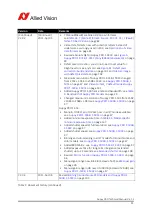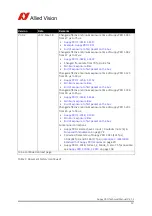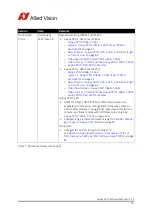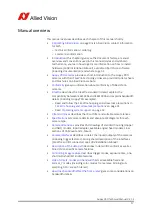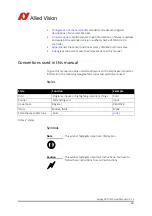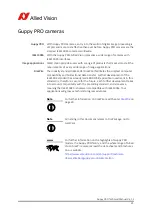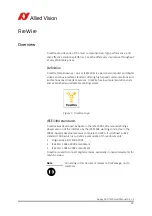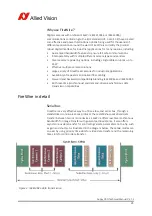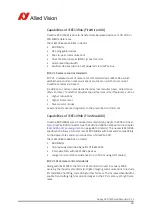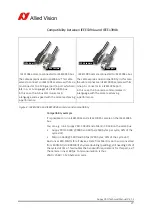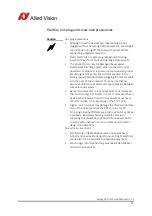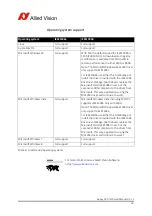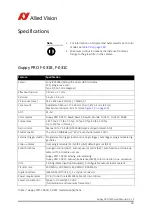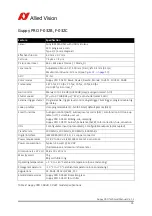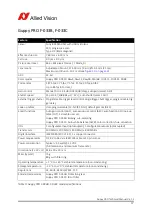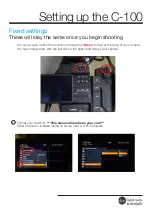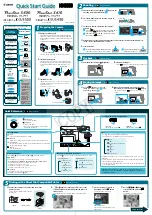
Guppy PRO Technical Manual
V4.1.2
25
Whereas IEEE1394a works in half duplex transmission, IEEE1394b does full
duplex transmission. IEEE1394b optimizes the usage of the bandwidth, as it
does not need gaps between the signals like IEEE1394a. This is due to parallel
arbitration, handled by the bus owner supervisor selector (BOSS). For details
see the following diagram:
Additional devices may be added up to the overall capacity of the bus, but
throughput at guaranteed minimum service levels is maintained for all devices
with an acknowledged claim on the bus. This deterministic feature is a huge
advantage for many industrial applications where robust performance is
required. This applies with applications that do not allow dropping images
within a specific time interval.
FireWire connection capabilities
FireWire can connect together up to 63 peripherals in an acyclic network
structure (hubs). It allows peer-to-peer device communication between digital
cameras, without using system memory or the CPU.
A FireWire camera can directly, via direct memory access (DMA), write into or
read from the memory of the computer with almost no CPU load.
FireWire also supports multiple hosts per bus. FireWire requires only a cable
with the correct number of pins on either end (normally 6 or 9).
Figure 3: IEEE1394b data transmission
Caution
While supplying such an amount of bus power is clearly a
beneficial feature, it is very important not to exceed the inrush
current of 18 mJoule in 3 ms.
Higher inrush current may damage the PHY chip of the camera
and/or the PHY chip in your PC.
Cycle Sync: 1394b
Parallel arbitration, handled by BOSS, can eliminate gaps

